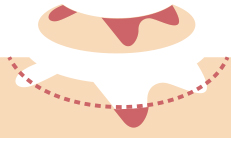Mohs Surgery
Mohs surgery, also known as micrographic surgery, is the treatment of choice for basal cell and squamous cell skin cancers at Midwest Dermatology.
Our dermatologists use it because it:
- Has the highest cure rate compared to other treatments; upwards of 95 percent!
- Removes the most cancer AND preserves healthy skin because surgeons remove thin layers of cancerous tissue, one layer at a time.
- Removes the root of the cancer.
- Leaves the smallest scar possible.
- Has a shorter recovery time and involves fewer complications.
Cost much less than other treatments because of the reduction in recurrence.







